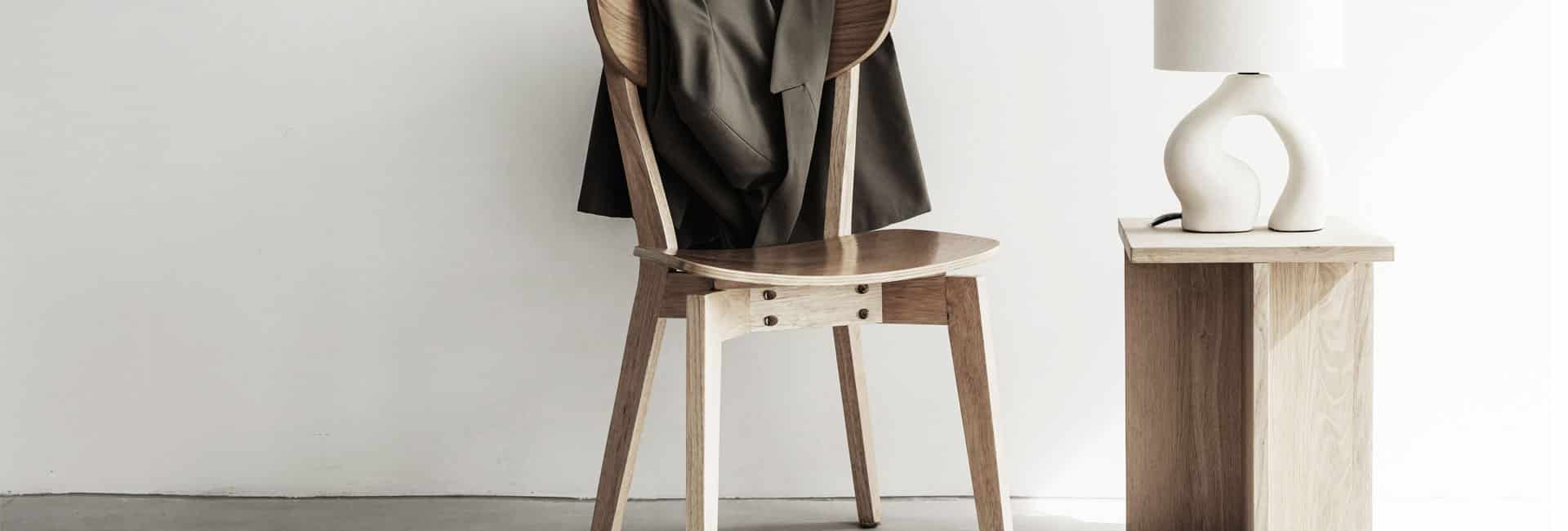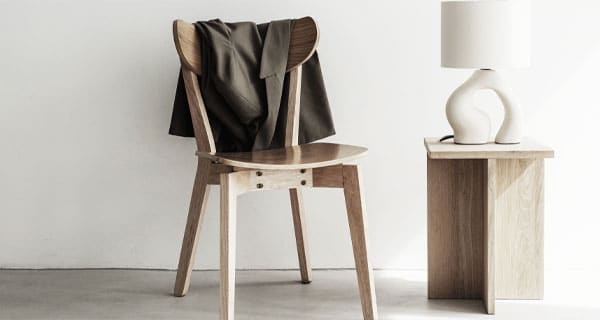
Used under a Creative Commons Licence
Beware of Hidden Traps in Trading Terms and Conditions: A Legal Guide for Furniture Designers
Trading terms and conditions may seem like standard paperwork, but for many Australian furniture designers and manufacturers, they can hide significant legal risks.
At Sharon Givoni Consulting, we regularly see suppliers unknowingly sign away critical rights, particularly in relation to their original designs.
This blog is designed to help you to navigate some of the legal traps in trading terms and offers practical steps to protect their intellectual property (IP).
When Retailers Have the Upper Hand
It’s increasingly common for large retailers to include clauses in supplier agreements that allow them to commission or manufacture products that are “similar or identical” to the supplier’s designs. These hidden terms may sound harmless, but they can effectively allow the retailer to copy your design through another (often cheaper) manufacturer—with no legal consequences.
This is not just unethical. It can also be heartbreaking for designers who invest significant time and resources into developing unique pieces, only to see their work replicated without credit or compensation.
Why Copyright May Not Protect You
Many furniture designers believe that once they create a new design, they automatically own the copyright. While this is true for many creative works in Australia, furniture designs fall into a unique legal category. Under Australian copyright law, if your furniture design has been industrially applied (meaning 50 or more units have been made), you generally lose copyright protection unless the item qualifies as a “work of artistic craftsmanship.”
This means that once your design is mass produced, it may not get copyright protection unless it has significant artistic quality—a grey area that is difficult to argue in court.
The Importance of Design Registration
The safest and most reliable way to protect your furniture designs is through design registration. The Designs Act 2003 (Cth) governs this process in Australia. A registered design gives you the exclusive right to use, licence, sell, and take legal action against unauthorised use of your design.
To be eligible for registration, your design must be:
- New: Not publicly disclosed anywhere in the world;
- Distinctive: Substantially different from existing designs.
Understanding the 12-Month Grace Period for designs
A key development in Australian design law is the introduction of a 12-month grace period into the Designs Act 2003 (Cth), which came into effect on 10 March 2022.
This amendment has meant that designers can now publicly disclose their design. You can post it online, launch at a trade show, or sell it in-store—and still apply for registration within 12 months of that disclosure. Before this was not possible as disclosure would invalidate the design.
The reform brings Australia into line with international practices and provides much-needed flexibility for designers who may have inadvertently disclosed a design, or who wish to test a product’s commercial appeal before committing to registration.
In practical terms, this means that if a designer begins selling a new chair or table today, they can still apply for a registered design within a year of that first sale—provided they can show when and how the design was made public. This requires evidence such as dated marketing materials, online listings, or sales records, along with a formal declaration during the application process.
However, it’s important to note that the grace period only applies to disclosures made on or after 10 March 2022, and there are some exclusions.
One key limitation is the “prior use” defence: if a competitor independently begins using or selling a similar design before your registration is filed, they may be legally allowed to continue doing so, even after your design is registered.
While the grace period is a welcome safety net, we like to say that the best legal strategy remains registering your design before any form of public disclosure. This ensures maximum protection—both in Australia and abroad—and avoids the burden of proving eligibility under the grace period provisions.
Read more about the grace period here: https://www.ipaustralia.gov.au/design-rights/timeframes-and-fees/grace-period#:~:text=You’ll%20need%20to%20submit,to%20claim%20the%20grace%20period.
How Long Does Design Protection Last?
A registered design in Australia lasts for an initial five years, with an option to renew for another five. This gives you up to 10 years of legal protection, provided you renew your rights before the expiration date.
Certifying Your Design
Registering your design is an essential first step—but it’s not enough on its own if you want to enforce your rights in court. To take legal action against someone copying your registered design, you must go through a certification process with IP Australia.
Certification involves a formal examination of your registered design to confirm that it is “new and distinctive” when compared to existing designs on the market. This process ensures that your rights are legally enforceable and gives your design greater weight in court. Without certification, you cannot sue for infringement under the Designs Act.
Importantly, certification takes time and money. The examination process can take weeks or even months, and additional professional fees may apply if legal or evidentiary issues arise. This is why we often recommend seeking certification early, particularly for designs that are commercially valuable or at high risk of being copied.
We can help assess whether certification is needed now or whether it can wait—and guide you through the process efficiently so that you’re in the strongest possible legal position if enforcement becomes necessary.
Trade Mark Your Brand
Design protection covers the shape or look of your product. But what about your brand name or the name of your collection? Trade marks are another powerful layer of protection.
Trade marking your brand name (and even individual product lines) can prevent competitors from using your reputation to market replica products. Even if your design registration expires, a trade mark can live on indefinitely, as long as it’s renewed. Herman Miller, Fenton & Fenton, Domayne, Freedom and DesignByThem are examples of Australian registered trade marks.
Case Study: Herman Miller v Matt Blatt
In 2011, Herman Miller, Inc., the renowned US-based furniture manufacturer, took legal action against Matt Blatt, an Australian retailer known for selling replica furniture. The dispute centred on replica versions of the iconic Eames chairs, originally designed by Charles and Ray Eames.
Herman Miller alleged that Matt Blatt engaged in misleading or deceptive conduct under the Australian Consumer Law and infringed its registered trade marks by selling lookalike furniture in a way that could cause consumers to believe the products were associated with or authorised by Herman Miller.
Although Matt Blatt was ultimately permitted to continue selling the replicas, it was required to make clear disclaimers—stating that the items were not affiliated with, endorsed by, or manufactured by Herman Miller. This case illustrates that even in the absence of a registered design, trade mark law and misleading conduct provisions under the ACL can still offer some level of protection for iconic products and their branding. Read more about it here: https://www.indesignlive.com/report/win-for-herman-miller-vs-matt-blatt and here: https://dynamicbusiness.com/topics/small-business-resources/legal/local-replica-furniture-business-surprised-by-legal-action-2992011.html
What Can Sharon Givoni Consulting Do?
At Sharon Givoni Consulting ®, we help designers and suppliers protect their IP through:
- Reviewing and negotiating retailer trading terms and conditions;
- Advising whether your furniture qualifies as a work of artistic craftsmanship;
- Preparing and lodging design registration applications with IP Australia;
- Managing design certification if enforcement is required;
- Filing trade mark applications for your brand and product names;
- Drafting licensing and collaboration agreements;
- Conducting IP audits and risk reviews;
- Enforcing your rights if your work has been copied.
- Overseas Protection.
If you’re planning to expand internationally, it’s important to note that Australian design registration does not protect your work overseas.
FAQs:
Can I still register my design if I’ve already posted it on Instagram?
If it’s within 12 months of the post, you might still be eligible under the new grace period. But earlier is always better.
Can I stop a retailer from copying my design if I haven’t registered it?
It’s much harder. You may be able to argue misleading conduct or breach of contract, but your position is much stronger with a registered design.
Can I register both my design and trade mark for the same product?
Absolutely. This dual strategy offers the best long-term protection for your product and brand. For example, Weber BBQs have registered designs protecting the shape of their grills and a shape trade mark and Coca-Cola protects its iconic contour bottle through design registration the shape of the bottle as a trade mark.
What if someone copies but changes the design slightly?
If the design is still “substantially similar in overall impression,” you may still have a claim under design law but best to get legal advice as this is very nuanced.
Final Thoughts
In the competitive world of furniture design, originality is everything.
But without proper legal safeguards, even the most innovative creations can be vulnerable to copycats and opportunistic retailers. It’s not enough to rely on handshake agreements or hope that your work will be respected—proactive legal protection is essential.
We understand the challenges faced by Australian designers and makers.
We’ve helped countless clients secure their rights, enforce their IP, and avoid costly legal missteps. Whether you’re just starting out, launching a new collection, or already selling nationally or abroad, now is the time to ensure your creative assets are backed by sound legal strategy.
Don’t wait for a dispute to find out your rights—protect them from the start. Let’s turn your designs into protected business assets—because you’ve worked too hard for anything less.
Please note the above article is general in nature and does not constitute legal advice.
Please email us info@iplegal.com.au if you need legal advice about your brand or another legal matter in this area generally.


